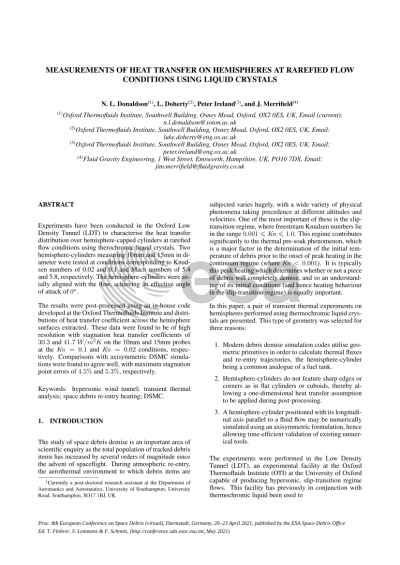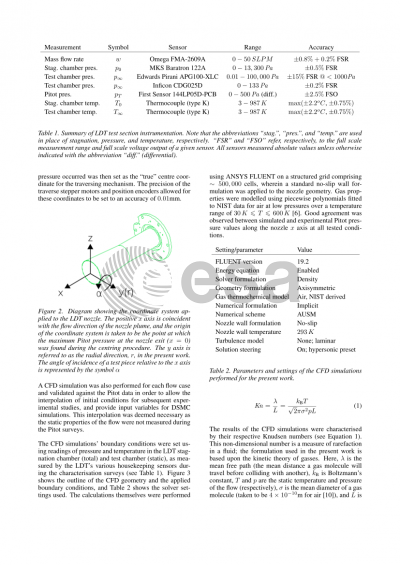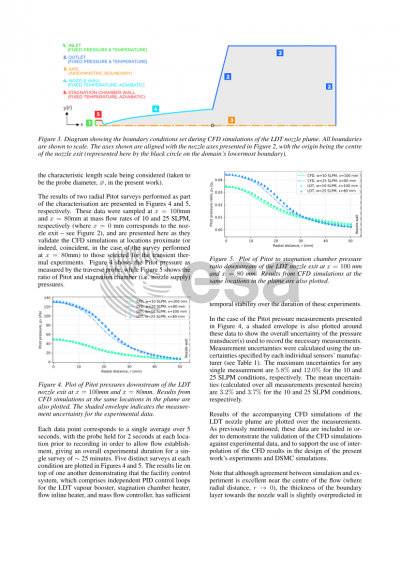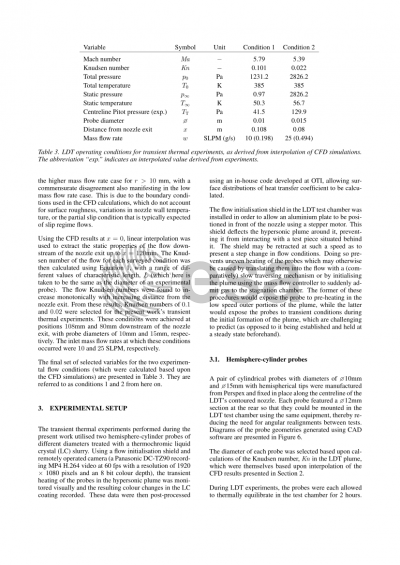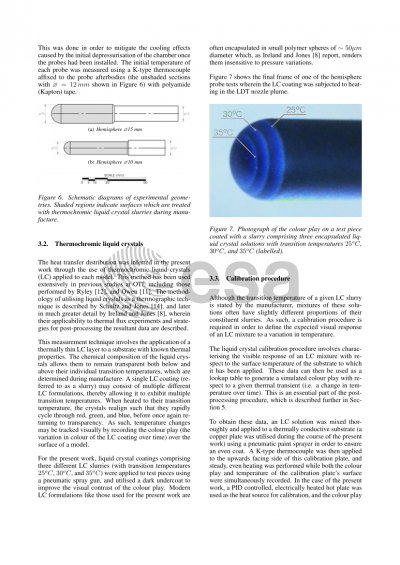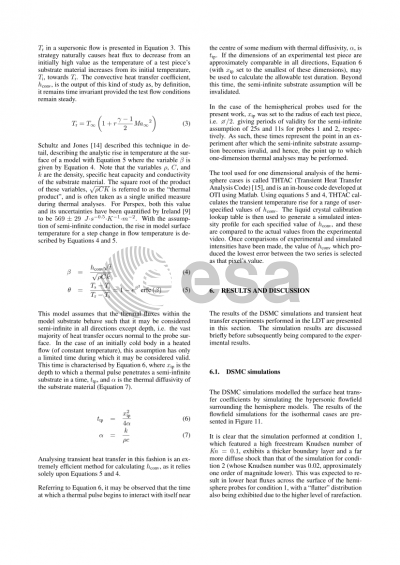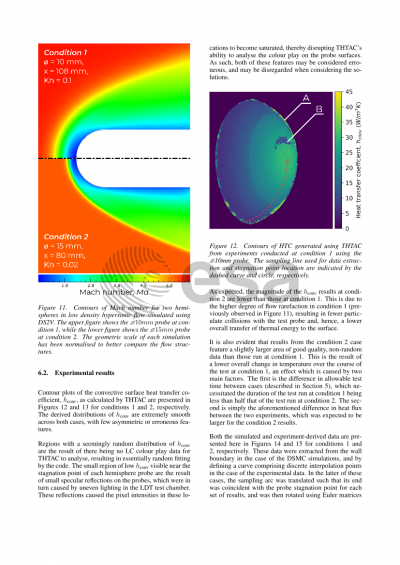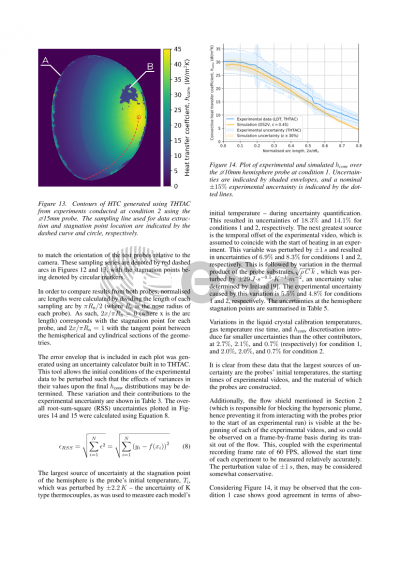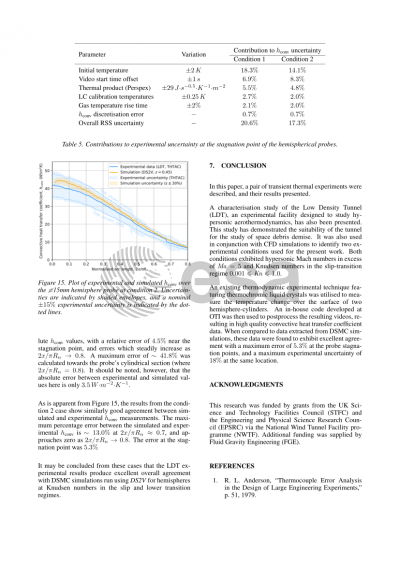Document details

Abstract
In the study of space debris re-entry heating, there are to this day significant uncertainties in the distribution of thermal fluxes incident upon re-entering spacecraft and debris. In order to improve the accuracy of such calculations, experiments have been conducted in the recently refurbished Oxford Low Density Tunnel (LDT) to characterise the heat transfer distribution over a pair of hemisphere-capped cylinders measuring 10mm and 15mm in diameter. These models were constructed of Perspex, and were designed as simple geometric analogues of satellite components such as those utilised by current debris simulation codes.
Two separate freestream conditions were achieved during tests, with corresponding Mach numbers of 5.4 and 5.8, and Knudsen number of 0.02 and 0.1, respectively. The hemisphere-capped cylinders were coated with a slurry of thermochromic liquid crystals and were oriented with their long axes parallel to the freestream flow direction in the LDT. Upon initialisation of the plume from the facility's contoured nozzle, visual changes in the thermochromic coating were induced due to heat transfer from the incident hypersonic flow. This "colour play" was then recorded, and the resulting video analysed using an in-house post-processing code, thus calculating the surface distributions of heat transfer coefficient on each model.
Finally, the operational characteristics of the LDT and details of its recent upgrades are briefly described. A characterisation of the facility's flow capabilities is then presented in terms of Pitot pressure and total temperature measurements of the experimental plume.
Preview
